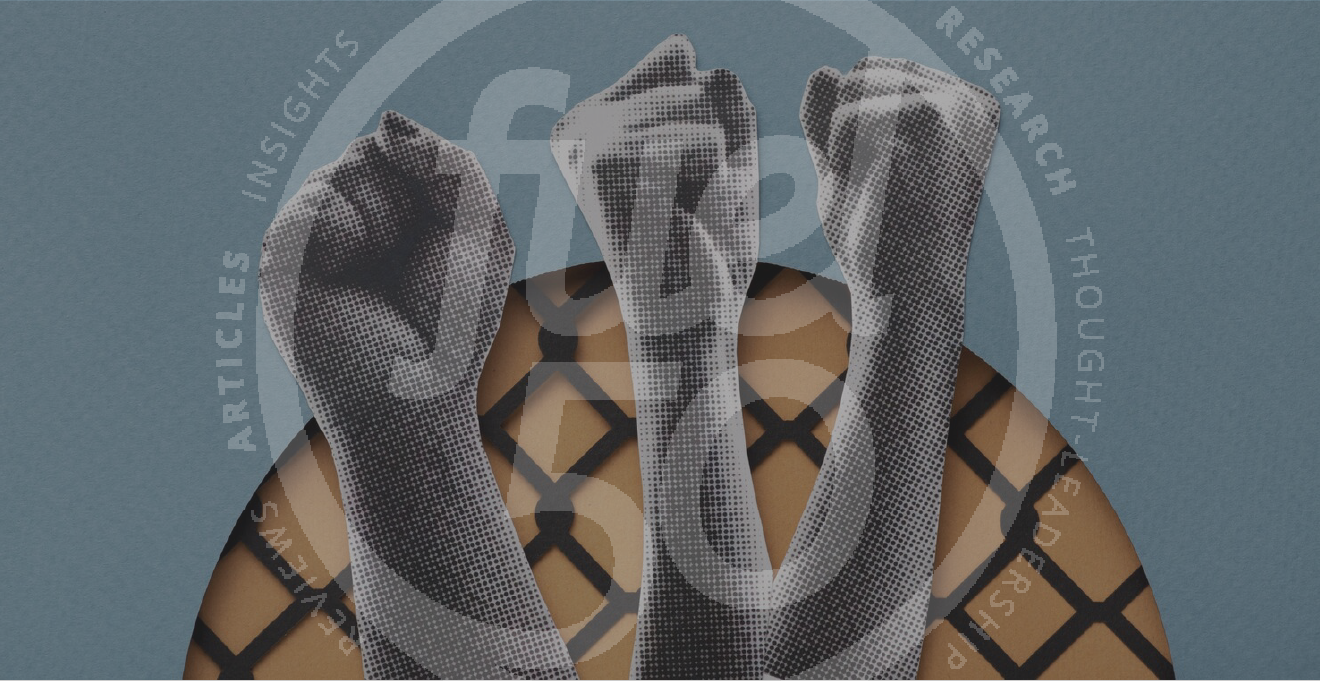Episode 34 saw Host John Hollon sit down with guest Alexandra Levit, the CEO and Founder of Inspiration at Work. Alexandra is an author, nationally syndicated columnist, and also served as a member of Business Roundtable’s Springboard Project, which advised the Obama administration, the U.S. Department of Labor, and the U.S. Department of Defense on current employment issues. In this discussion, Alexandra explains how organizations can avoid being a casualty of the great resignation by doing more employee listening than ever before, and why it is so important that we don’t slip backward into pre-pandemic ways of working.
We see this episode plunge into topics such as pay equity, employee appreciation, effective technology implementation, and how to lay the foundation for a supportive, creative, and effective culture built on good rapport. When Alexandra speaks you can hear how passionate she is about preparing both organizations and their employees for the future workplace – this episode is a reminder to preserve all we have learned over the past 18 months.
Here’s how the conversation went… This interview has been edited and condensed.
John Hollon: Hello, I’m John Hollon and welcome to the Talent Experience Podcast. Today’s guest is Alexandra Levit. Alexandra is a good friend and the founder and CEO of inspiration at work. A woman owned consulting business with the goal of preparing organizations and their employees to be competitive and marketable in the future business world. A former nationally syndicated columnist for The Wall Street Journal and writer for The New York Times, Fast Company and Forbes. Alexandra has authored several books including the international bestseller, They Don’t Teach Corporate in College and Humanity Works, merging people and technologies for the workforce of the future. In the last few years, Alexandra has conducted proprietary research on the future of work technology adoption, the millennial generation, gender differences and bias, and the skills gap. She also served as a member of the Business Roundtable springboard project, which advised the Obama administration, the US Department of Labour, and the US Department of Defence on current employment issues. Member the Northwestern University Council of 100 and the young entrepreneur Council, Alexandra received the prestigious Emerging Leader Award from her alma mater. The award honours a Northwestern grad under 35, who’d made a significant impact in her field and in society. She was also named to the Thinkers50, Radar Class of 2019. This global organization identifies individuals developing the most compelling Business and Management ideas of our age, and she resides in Chicago. Hello, Alexandra, I’m always impressed by how busy you are, how’s life?
Alexandra Levit: It’s good to have the opportunity to talk with you. I’ve been really excited about this.
John Hollon: Great I have been to so let’s jump into it. On the homepage of your website, AlexandraLevit.com. You have a quote that says, “I prepare organizations and their employees for meaningful careers in the future workplace.” How has that gone for you over the last 18 months, given the great challenges that workers and organizations have had to deal with during the pandemic and the lockdown?
Alexandra Levit: This is a great question and I think that the messages that we were attempting to deliver prior to the pandemic, that nobody had a whole lot of urgency around. Things like you really want to do something that allows you to develop and acquire cross-functional skills in a wide variety of areas, you want to do something that compels you, that interests you, that doesn’t necessarily result in a whole lot of boredom or inertia. Then from the organizational standpoint, you want to be doing everything possible with your employee experience, that includes candidate experience or talent acquisition, to ensure that you are able to attract and keep the best talent because even prior to the pandemic, we were looking at a natural labour shortage. And I know you’ve talked about this too, that is resulting from just simply demographic shifts of the baby boomers are retiring in great numbers, which was held back a little bit by societal events, but is now finally happening. You’ve got a small generation in the middle called Generation X, that’s just there’s just not a whole lot of them, I’m part of that generation. Then you have delayed maturity or delayed start to careers for both the millennial generation, and Generation Z. So those are the people that are born roughly 1980 to 1995, and then 1996 is 2012, and due to things like the recession that happened in 2008, to the recent pandemic, we have these young people or younger people, not necessarily in a position to take the roles that they normally would be ready for if they were in previous generations. Then you have just a whole lot of people who have reevaluated things as a result of the pandemic they have decided that these may be low level, low wage, high-risk jobs aren’t worth it, and they would rather be biding their time to do something else. So it’s never become more important that organizations pay attention to things like candidate and employee experience and that individuals pay attention to things like skill acquisition, but I think there’s a sense of acceleration and sense of urgency that is there now that we really couldn’t convince people of before they just had to unfortunately learn from a major disruption.
John Hollon: It sounds like this is a real retention problem. What are companies doing to deal with that?
Alexandra Levit: Well to be honest John, and I’d be interested in your answer to the same question. But what I’ve observed is that things are actually going in the opposite direction that, especially here in the US where things have been opened up for a couple of months now, we have a lot of companies that are putting out mandates or decrees that all employees will be going back on this date. And they’re really telling people as opposed to asking them, what they would prefer to do and what they think works best for them and their unique situation. And this is, in my opinion, the exact opposite thing of what needs to be happening, which is that we should be doing more employee listening than ever to figure out, alright, well, now is the time when this so called great resignation is coming. What can we do to avoid being one of the casualties and avoid being an organization that can’t get enough people. We already see that happening with airlines, we see it happening in hospitality in all these industries that they thought it was an employers market, are rapidly, it’s rapidly becoming a job-seekers market, and they don’t have the right processes in place to stem the flow of people out of their organizations. So I think some organizations are doing it right, but I think there’s a lot of organizations that are kind of going in the wrong direction on this.
John Hollon: And you know I’m starting to see, and I’ve been reading about this a little bit more and more every day. It seems that a lot of organizations aren’t focused on, you know, getting people is harder, so maybe we need to pay more. There seems to be resistance there, which as you know, coming out of the great resistance, great resistance, the great recession, sorry. Coming out of that, it was really difficult for a lot of people, because companies didn’t seem to be thinking about bringing pay levels back up, and I kind of feel that’s continued now. Is that, what you’re seeing too.
Alexandra Levit: Yeah, and absolutely. And it’s even worse because now we can track these things a lot better. There’s technology that a lot of organizations have at their disposal that allows them to see exactly where their pay compares to others in the same industry, where gender pay compares. I mean, one of the big things that’s been in the news last couple years, is that women continue to make significantly less money than men, despite the fact they might have identical levels of experience and expertise. And these are things that I don’t see a lot of movement, up to parity to really make it truly fair. I think that at the end of the day, we like to talk about feeling appreciated and valued and like you’re making a contribution, but money talks, and that is still the number one thing that is going to keep someone in organization or lead them to look. If they feel they’re being underpaid, and under compensated, then that is not going to bode well. So especially at a time like this, when again, you’ve got to be thinking of everything possible to keep people on the side of your organization, because there really isn’t a sense of loyalty right now, unless the employer was extremely good to their workforce during the pandemic. And that, while it happens is not the norm. So I think that organizations need to stop thinking that, well, these people should be lucky to have a job, because that’s the wrong mentality and pretty soon, it’s not even going to be true. So.
John Hollon: Very, very true. You know, you have a really unique insight into organizational strategy and culture, given the nature of your work. You might have answered this somewhat, but I’m going to ask this question anyway, what are the most significant workplace trends you seen come out of this COVID period?
Alexandra Levit: Well, hybrid work, of course, and this is something that is not new. We’ve been talking about the rise of the hybrid workforce and employers being more receptive to different types of flexible arrangements to hiring people with different employment arrangements. So part-time workers, contract workers, subject matter experts, freelancers, and this is something that was possible several years ago, because technology made it possible. But we really were a bit slow on the uptake, and it was just amazing how, when the crisis hit, and we had to do it this way, all of a sudden, it worked. Even to the point of things that I would have considered to be a little bit cutting edge, like employee sharing. Using a technology platform to say, ‘well, I don’t have any use for these 2000 housekeepers in my hotel right now, but my partner at Walmart needs these people in their stores to be to be check-out individuals and to stock shelves and load bags into people’s cars.’ The fact that you can see use HCM technology to see that and you can actually redeploy people based on where the immediate need is. I mean, this is again, something that has existed for a couple of years now, but we really were hard pressed to actually do it until we had to, and then it worked amazingly well. And so I guess my biggest hope John, is that we don’t go backward, I already see that happening with the mandates and the decrees that people come back to a physical office when there’s just really no compelling reason why that should be the case. It’s a tonne of overhead, there’s a tonne of extra costs, employees don’t like being told what they should be doing every second of every day, and I can’t really think of a really good reason why we would be going backward. I just hope the same thing is true for all kinds of flexible work, that now that we’ve got this 18-month trial, that is pretty successful in at least in terms of the bottom line in business productivity. The jury’s out as to whether it’s been truly successful in terms of employee mental health and stress levels. But from an employer perspective, they can’t really complain, it seems like on the whole. So I think that this is a trend that is accelerating, that I would like to see continue to accelerate. But I don’t know, I think the jury’s out.
John Hollon: I agree with you that, you know, a lot of companies, a lot of organizations kind of had to be dragged kicking and screaming into the remote work age. But the one big challenge I see is culture. How do you build a culture if you don’t have people having some degree, however minor, of face-to-face communication? And what I tell folks is that, one of the things I miss most, because I’ve been working remotely for about 10 years now. One of the things I miss most about an office environment are the random conversations you have, where problem-solving gets done, that you can’t script, you can’t zoom, you can’t book in advance, that just happened when you were getting a cup of coffee. You know, I ran into my art director about something and we were talking about what were your plans for that cover, and he’s struggling, and I mentioned something that I saw, and boom, it gets solved. I wonder how you deal with that, because those are really important things for a lot of organizations and building a culture doesn’t seem to be as easy in a remote world. In a hybrid world it may be possible because people might go into the office a little bit. But what’s your thoughts on all of that?
Alexandra Levit: Yeah, I love this and it speaks to the importance of a truly hybrid model. A hybrid model is not you’re doing 100% of your work remotely, that’s a remote model or a fully distributed model. But hybrid means that it’s assuming that people are going to be going into an office or at least meeting up with each other in person for various occasions. I agree with you that I think that that type of collaboration is essential, and you know, who it’s most essential for are those Gen Z employers or employees who are new to the workforce. They have no frame of reference for how a work world should operate, and how they should operate within the context of that environment. Without that in person culture, it’s going to be really slow going, and in some cases, it might be a complete failure, depending on how well an organization does their online collaboration, and there’s just a variety of levels to which people are effective. I mean, some organizations are great at having, you know, online happy hours and having you check in with your manager via video conference every single day. So you can be reasonably good at it, or you can be awful at it, but still, the best way that we can foster creativity, culture, and rapport building, is through at least occasional in person gatherings. And I think where organizations are, again, this, this speaks to these kind of unidirectional mandates that are coming down. But organizations can really go a long way by just asking people, look, we want to have some degree of in person engagement, what do you think would work best for you? What have you missed most about going into an office, and it’s going to vary based on geography based on role based on function industry, and you might have to very well create a situation that is not one size fits all, but that depends on what your people are actually doing. You’ve got essential workers who have to be there, but maybe there’s there’s other types of people who don’t technically have to be there but want to be there. And I think that you have to build that in and in terms of culture, employee listening is the number one most important way you can build it, in my opinion, because it comes from the ground up. It’s not you as a leader saying this is what I think the culture should be. It’s, this is what the employees, this is the kind of culture they want to participate in, that they want to belong in, and then we work to put processes and mechanisms in place to get to that outcome. What’s great about it is like now’s a better opportunity than ever because we’ve kind of had to start over. So if something wasn’t working before now. is the time to fix it. There’s so much technology out there that can be supportive of the hybrid workforce, and the key thing is just to keep asking. I did some really interesting research with Ceridian. It’s brand new, it’s just hot, hot off the press that showed that the majority of organizations are surveying their employees at least every six months, and this was an interesting stat, because if we think back to a decade ago, nobody was really doing surveys, definitely not more than once a year. So the most important thing that organizations can do in terms of building an effective culture is effective employee listening, where they just take a variety of methods, it could be a survey, it could be a scripted interaction with the managers are kind of trained to have with their employees on a weekly basis. It can be inclusion activities, and that’s a great place to start. Because people who are participating in diversity, equity, and inclusion events are often the more marginalized folks who don’t feel like they’re listened to, and they don’t feel like their input makes a difference. Sometimes they’ve got needs that leaders might not have even thought of. So going out of your way to hear from those people, and then most importantly if you do hear from them, you take action on what you hear. And this is something that has been a problem plaguing feedback from the dawn of time, right that we get a lot of feedback, and we don’t really do anything differently. And I think that that’s going to be a bad thing for culture going forward. If you do collect a lot of input, and you pretend to be listening, but then nothing really changes in the direction that employees are asking for.
John Hollon: A couple of times during our conversation here, you’ve mentioned technology as being, you know, a solution to a lot of these workplace problems. Do you think the problem is that organizations have it and don’t use it? Or don’t invest in it? Because there are tremendous numbers of technological solutions that can really help bring organizational structure, bring people together? So in this kind of time you think they would be using it more? Right?
Alexandra Levit: Yeah and John, I think the problem is both things you mentioned. I think it’s a lack of investment, but more so I would say, a lot of organizations do have the right technology, but they aren’t using it to its utmost effectiveness, meaning that they might have low user adoption, it might not be effectively integrated with other technologies that they have, they might not know how to get a single source of truth through one consistent data stream. So they might be like reading different reports from different systems that conflict with one another. They might not know how to use the analytical functions associated with a lot of these HCM systems. So they’re getting the data in, but they’re not necessarily taking that added step of using it to make important decisions and get important insights. So I think there’s a lot of problems right now with implementation, and a lot of organizations are excited because they’ve got all the bells and whistles, but at the end of the day it’s not really facilitating a better employee experience. So what I always like to say, is that you got to start with the strategy and then you fill in with technology. Not the other way around, where you start with a bunch of technology, and then you try to cobble together a cohesive strategy. The big thing is, is it’s got to be a mix of just like you were saying, with the value of in-person engagement, it’s got to be a mix of high tech and high touch engagement points. Where sometimes it’s a person talking to you, sometimes you’re getting an automated message, but it’s not all one or the other. Technology can allow us to communicate more frequently and make sure that nothing falls through the cracks, but you do need your manager to touch base with you and see how you’re doing and make sure that you’re not burned out or stressed out or thinking of leaving. And I think that technology can facilitate that, but we can’t forget about the human touch.
John Hollon: Great advice, and we’re coming down to the end here. We always have much more we want to talk about than we have time to do it, but there’s a question we ask everyone who comes on the Talent Experience Podcast, because we wholeheartedly believe everyone should have a job that they really are passionate about. So Alexandra, what do you love about your job and what you do?
Alexandra Levit: My passion right now is to do something meaningful for less fortunate groups that are suffering from the effects of the pandemic employment wise. So I’m going to be working with the National Institute of Health to Northwestern University to develop an application that will combine traditional career coaching and job seeking advice with proven Cognitive Behavioural Therapy, which is used in the treatment of depression and anxiety. The goal is to make this accessible to people who would not have access to it otherwise. So high-level executives, they’ve got all kinds of resources, but people who make under $60,000 dollars US a year, maybe have never been exposed to this and may unfortunately be at risk of a spiral when they become unemployed; and then that depresses them, and then they stay unemployed, and then that leads to more depression and so on. So I’m very excited to get started working on this project. It’s an area where I feel I can genuinely make a difference. Not that I don’t do that when I work with companies, but think companies can, you know, can fend for themselves a little better than in some of these populations. So I’m excited about that.
John Hollon: Well, I know you can make a difference, particularly since you’re so passionate about it. I want to say thank you so much for spending some time with us today. It’s been great to have you with us and to get your perspective. We really appreciate you being here. Thanks again.
Alexandra Levit: Thanks so much John, anytime. You know, you can always call me and thanks to, thanks to everybody who made this possible today.
John Hollon: Great! So for The Talent Experience Podcast, this is John Hollon. Thanks again for listening.









